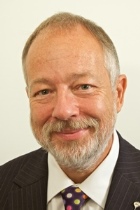Advances in Project Management Series
SERIES ARTICLE
By Dr. David Hillson
United Kingdom
Based on Chapter 2 of “Capturing Upside Risk” (Taylor & Francis, 2019)
Most people accept that the concept of risk covers more than just threats, and there is a strong case for a broader definition of risk that also includes opportunities. Building on that insight, we can move on to consider how it might be applied to the world of projects. If the generic definition of risk includes both downside and upside, then it seems obvious that we should expect to find both threats and opportunities in our projects. This article explores the concept of “opportunity” in the context of projects.
WHY PROJECTS ARE RISKY
Anyone who has ever worked on a project will know that projects are risky. But why? There are three main reasons:
- Common characteristics
- Deliberate design
- External environment
Common characteristics
All projects share a range of features which make them inherently uncertain:
- Uniqueness. Every project involves at least some elements that have not been done before, and the novelty and lack of experience with these elements introduces uncertainty.
- Complexity. Projects are complex in a variety of ways and are more than a simple list of tasks to be performed. There are various kinds of complexity in projects, including technical, commercial, interfaces, or relational, each of which brings uncertainty into the project. A project can be viewed as a complex system, and if we are unable to predict the way the system will react, then uncertainty is inevitable.
- Assumptions and constraints. Project scoping involves making a range of guesses about the future, which usually include both assumptions (things we think will or will not happen) and constraints (things we are told to do or not do). Assumptions and constraints may turn out to be wrong, and it is also likely that some will remain hidden or undisclosed, so they are a source of uncertainty in most projects.
- People. All projects are performed by people, including project team members and management, clients and customers, suppliers and subcontractors. All of these individuals and groups are unpredictable to some extent and introduce uncertainty into the projects on which they work.
- Stakeholders. These are a particular group of people who can influence the project to a greater or lesser degree. Stakeholder interests can be varying, overlapping and sometimes conflicting, and the position adopted by stakeholders towards the project can change with time, making them a common source of uncertainty.
- Change. Every project is a change agent, moving from the known present into an unknown future, with all the uncertainty associated with such movement.
Any uncertainty arising from these characteristics that might affect project objectives should be considered as a risk. However, these characteristics are built into the nature of all projects and cannot be removed without changing the project. For example, a “project” which was not unique, had no constraints, involved no people, and did not introduce change would in fact not be a project at all. Trying to remove the risky elements from a project would turn it into something else, but it would not be a project.
Risk includes both threat and opportunity, so each of these sources of uncertainty might give rise to project opportunities as well as threats. For example, unique aspects of a project might present unexpected savings in time and cost as a result of having to use novel development techniques. Considering complexity may reveal areas of synergy that were not previously apparent. Where assumptions or constraints limit the degrees of freedom for a project, if these were to prove false or flexible, it might allow the project to operate more efficiently. Not all stakeholders are adversaries of the project, and friendly stakeholders might offer support that makes life easier for the project team…
More…
To read entire article, click here
Editor’s note: The Advances in Project Management series includes articles by authors of program and project management books published by Routledge worldwide. Information about Routledge project management books can be found here.
How to cite this paper: Hillson, D. (2020). What are Opportunities in Projects? PM World Journal, Vol. IX, Issue II, February. Available online at https://pmworldlibrary.net/wp-content/uploads/2020/02/pmwj90-Feb2020-Hillson-what-are-opportunties-in-projects.pdf
About the Author

Dr David Hillson HonFAPM PMI-Fellow CFIRM CMgr FCMI
The Risk Doctor
United Kingdom
![]()
Known globally as The Risk Doctor, David Hillson leads The Risk Doctor Partnership (www.risk-doctor.com), a global consultancy offering specialist risk services across the world.
David has a reputation as an excellent speaker and presenter on risk. His talks blend thought-leadership with practical application, presented in an accessible style that combines clarity with humour, guided by the Risk Doctor motto: “Understand profoundly so you can explain simply”.
He also writes widely on risk, with eleven major books, and over 100 professional papers. He publishes a regular Risk Doctor Briefing blog in seven languages to 10,000 followers, and has over 7,500 subscribers to the RiskDoctorVideo YouTube channel (www.youtube.com/RiskDoctorVideo)
David has advised leaders and organisations in over fifty countries around the world on how to create value from risk based on a mature approach to risk management, and his wisdom and insights are in high demand. He has also received many awards for his ground-breaking work in risk management over several decades.










[…] By creating your own shoe brand, you strengthen security in yourself. It allows you to keep moving forward while maintaining a positive attitude towards new opportunities that arise in the project’s development. […]